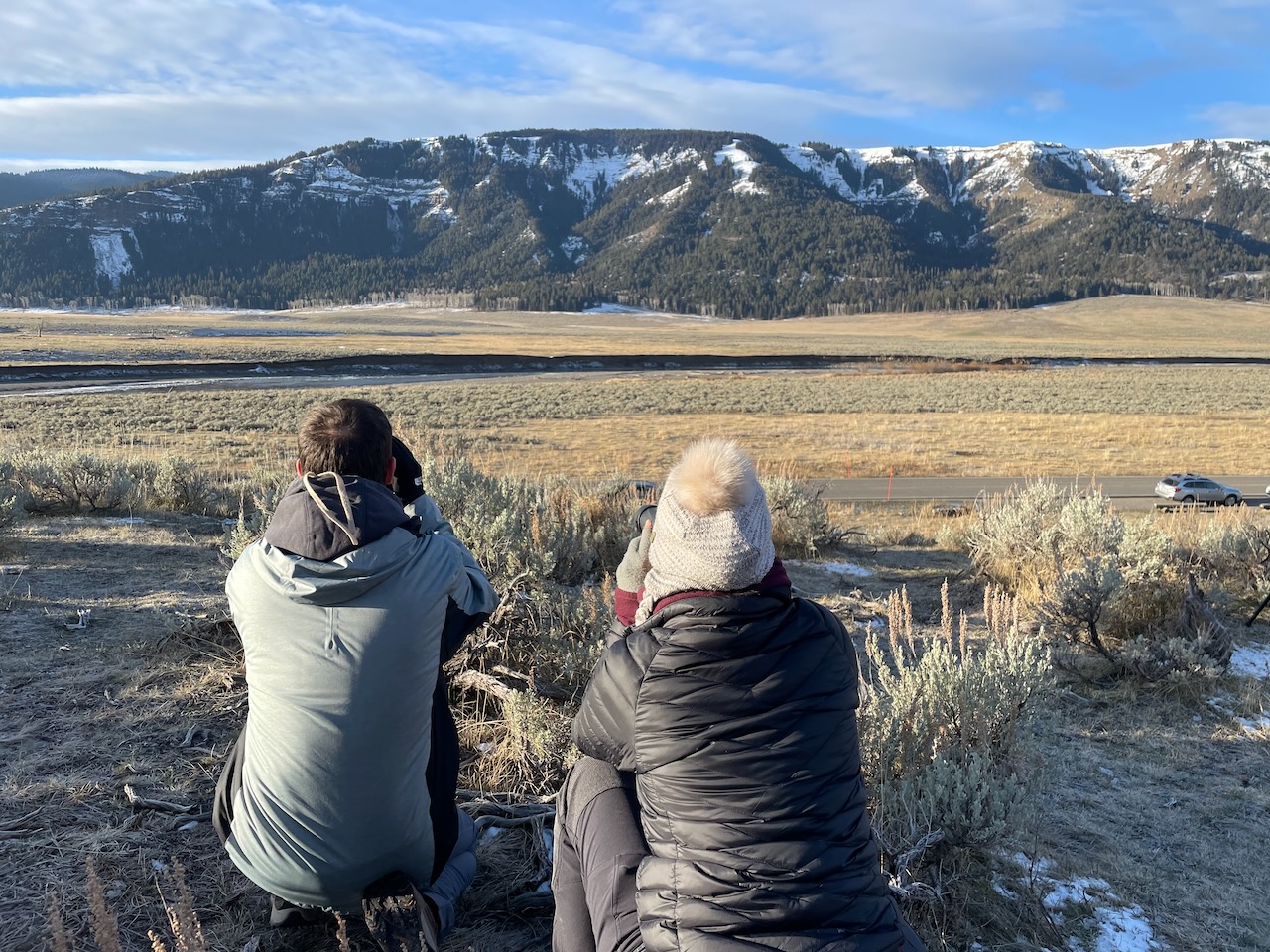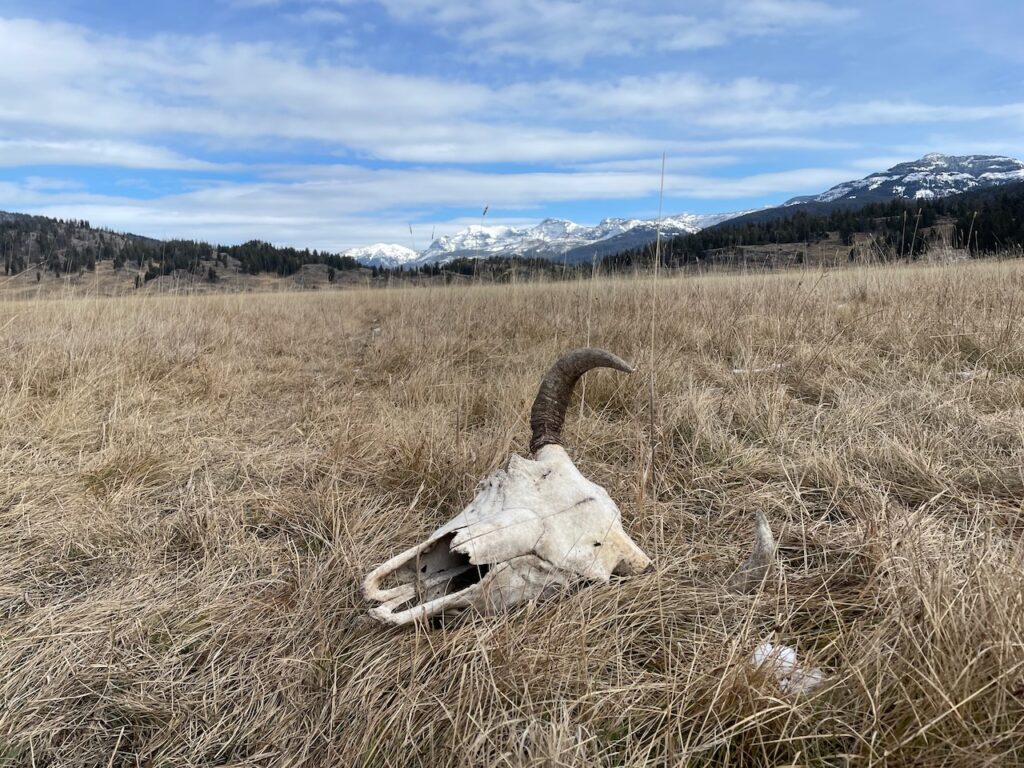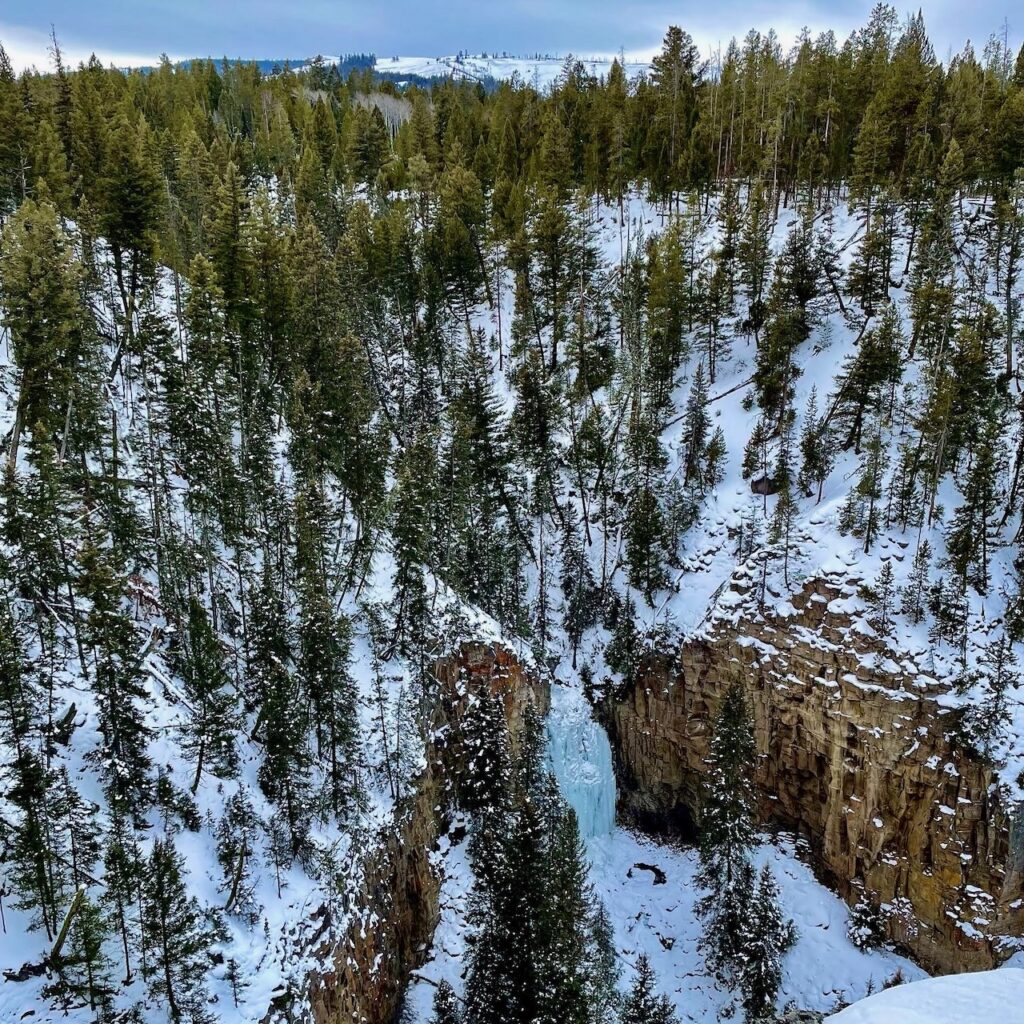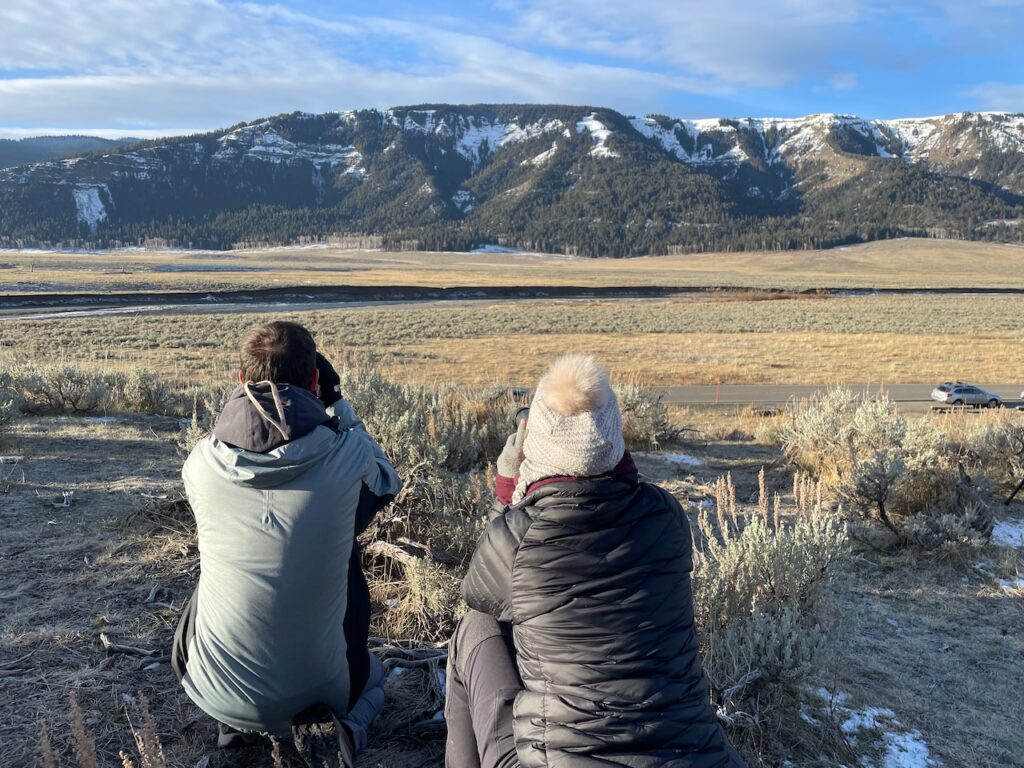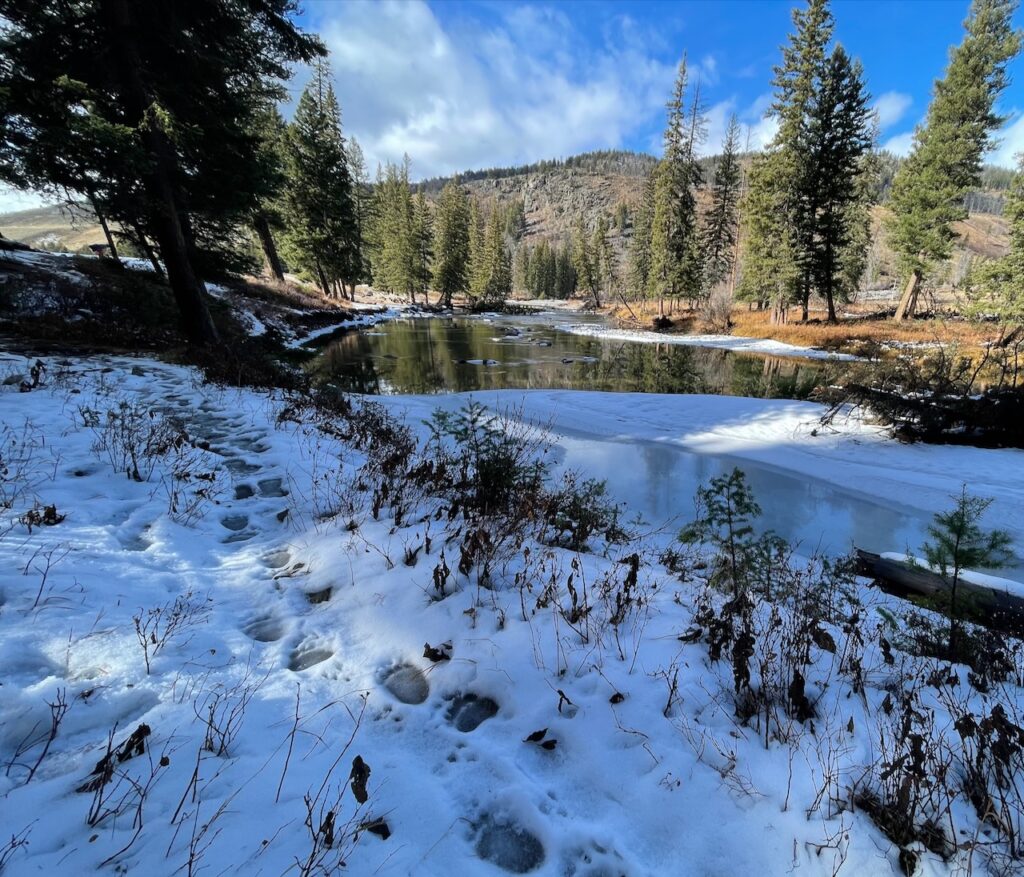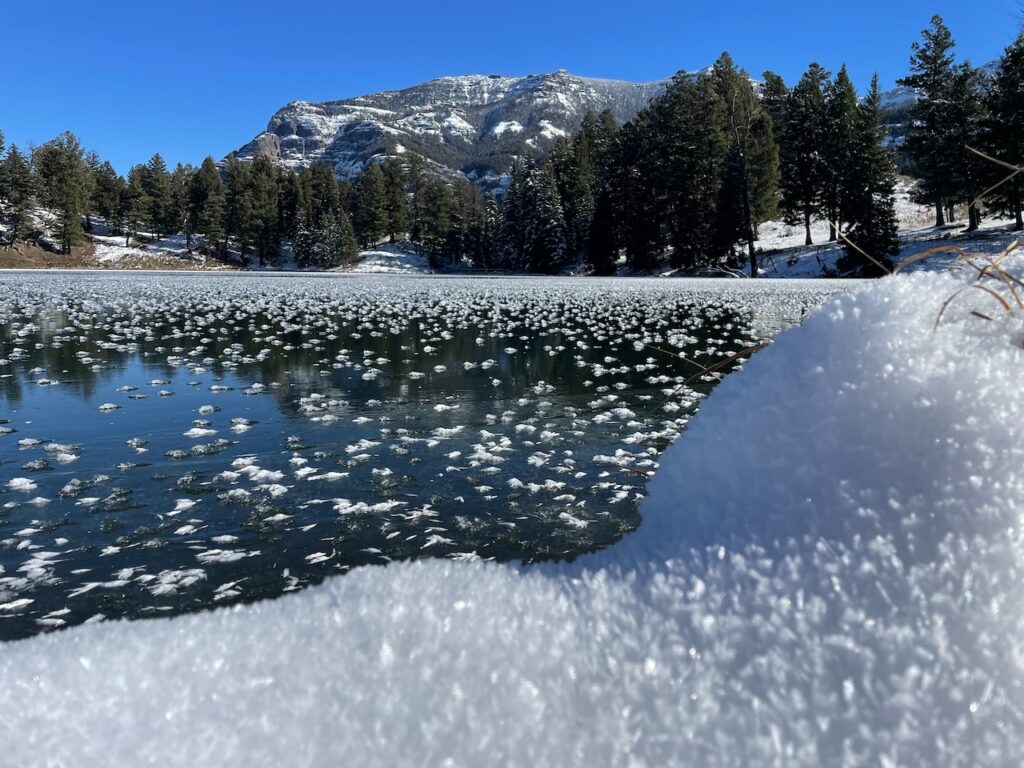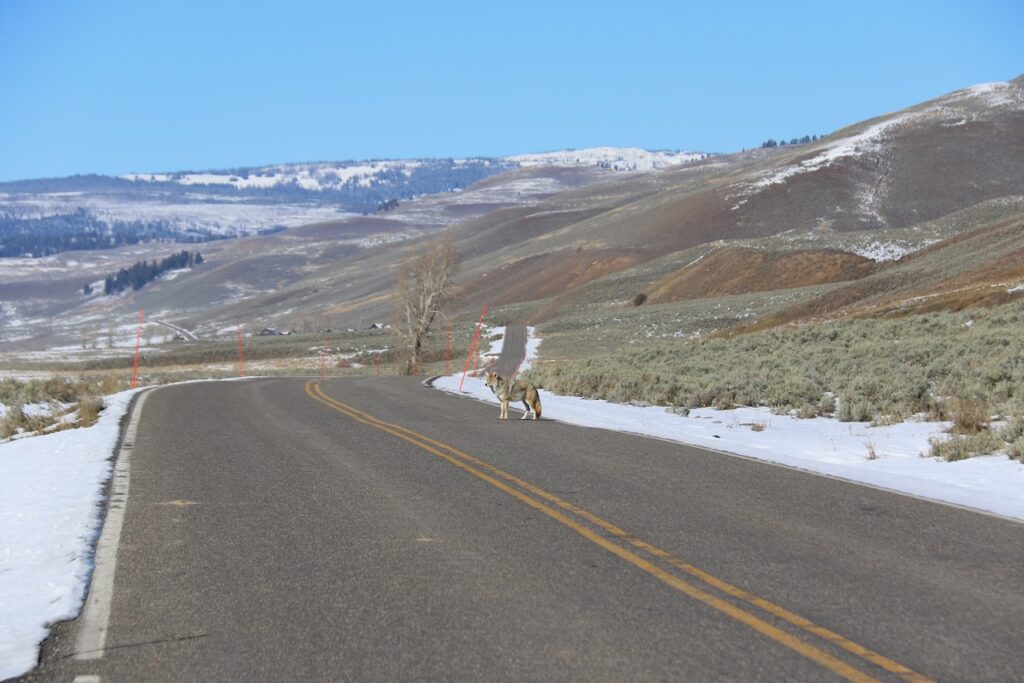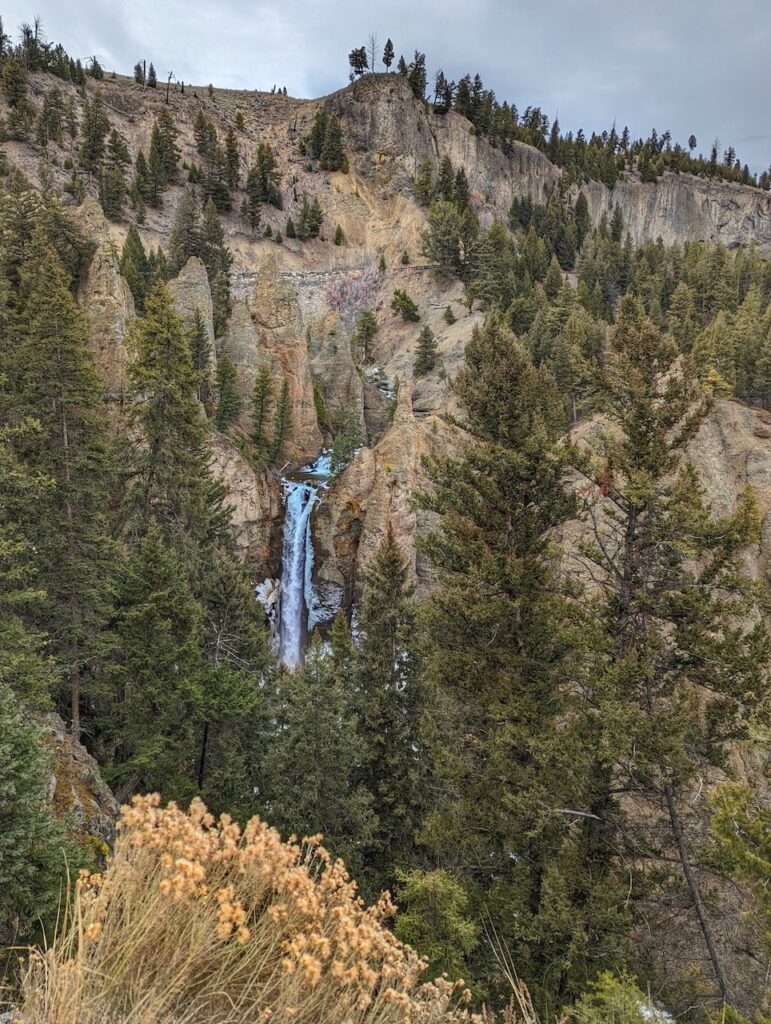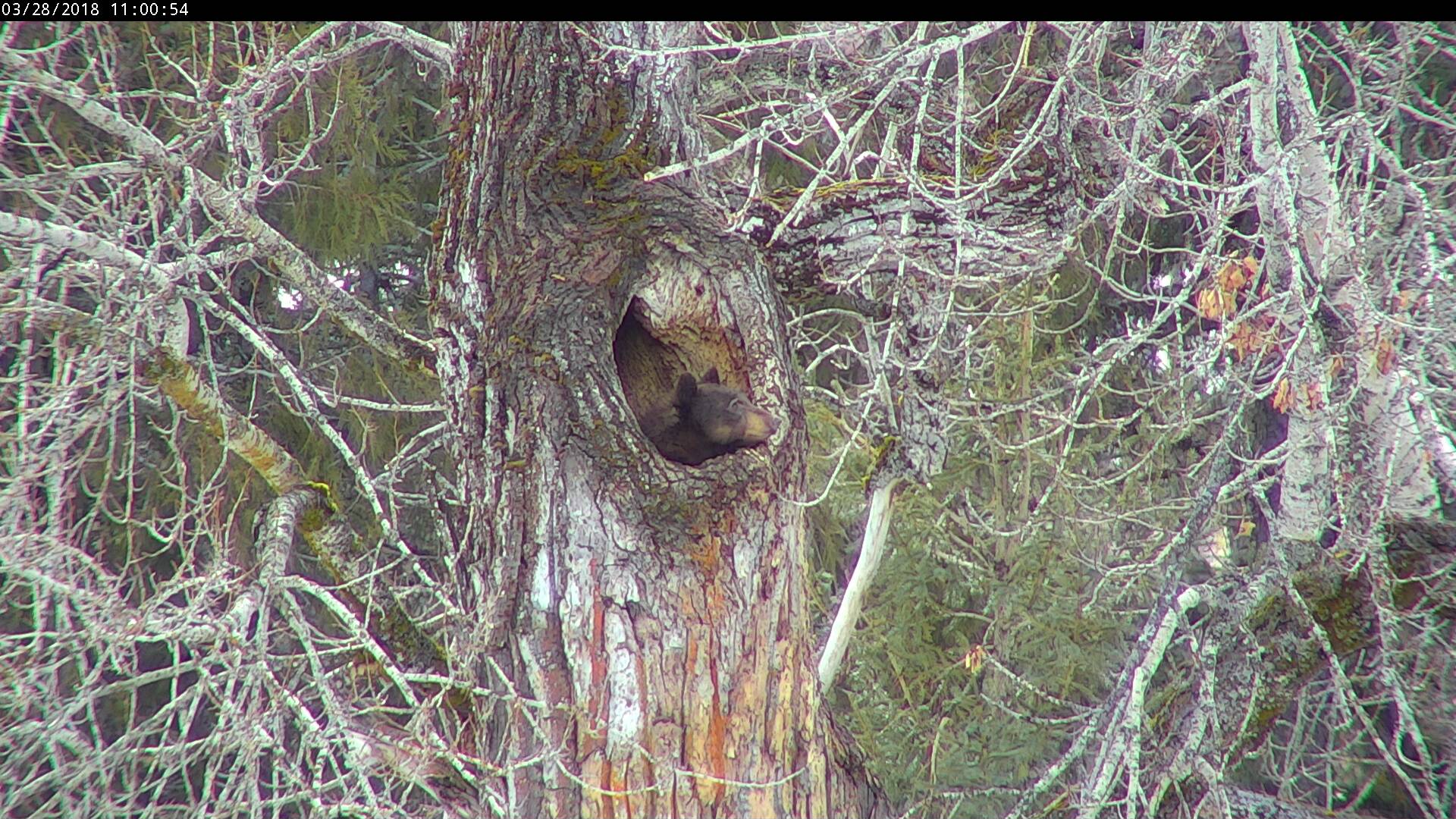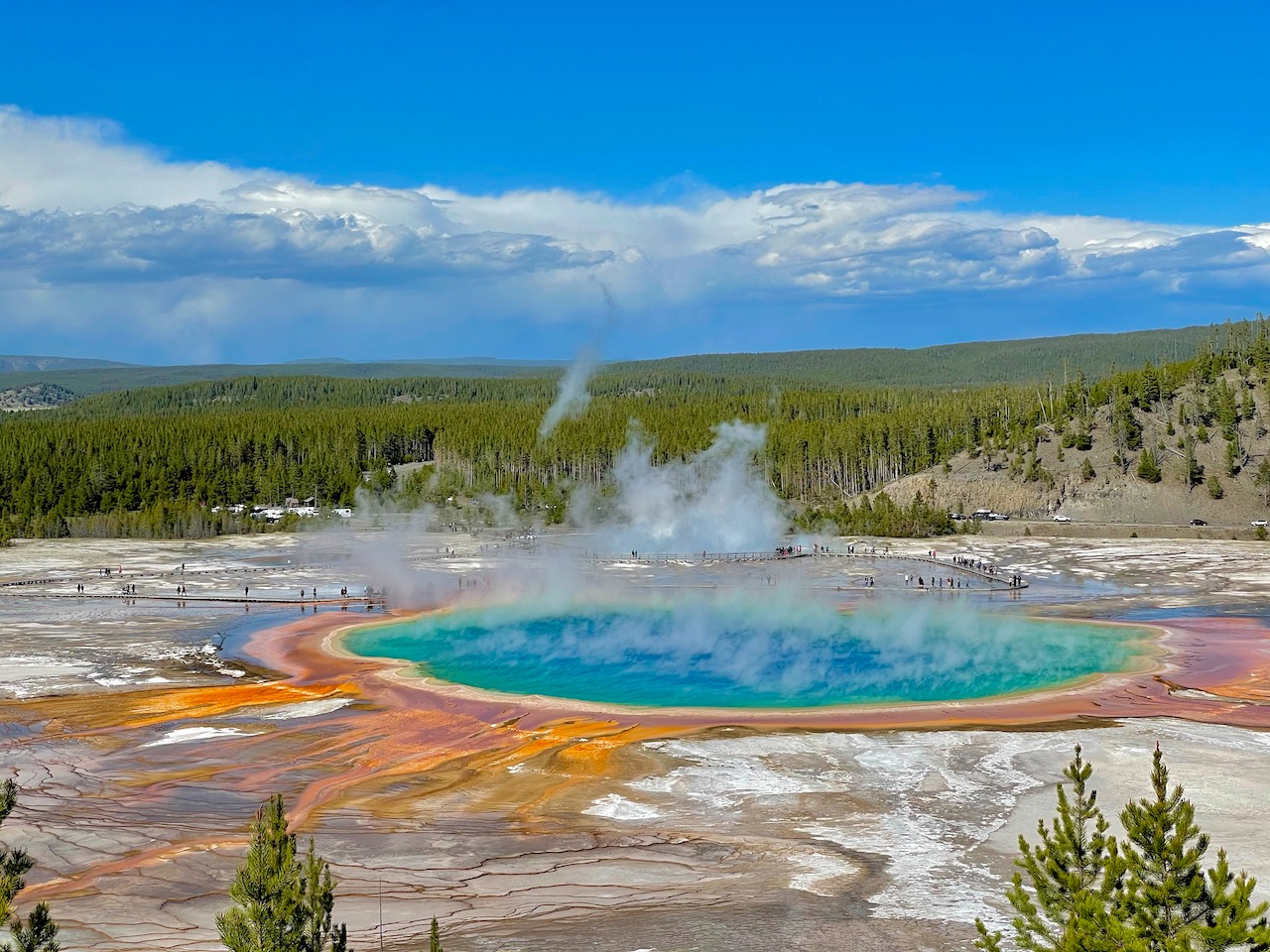Thinking of heading to Yellowstone National Park in November? You won’t see many other people.
November is historically the least-visited month for Yellowstone National Park. Over the last 20 years, November visitation has averaged roughly 15,590 visitors, or just under 520 people a day. To help put this in perspective, July averages roughly 900,000 visitors, and October averages roughly 220,000 people over the last two decades.
Why Does Visitation Drop So Sharply?
The park’s interior roads close at the end of October, leaving only the northern road—between Gardiner, Montana, and Cooke City, Montana, which passes through Mammoth Hot Springs, Tower Junction, and Lamar Valley—open for travel. Check road conditions here.
Those hoping to visit the interior, with sights like Hayden Valley, the Grand Canyon of the Yellowstone River, and Old Faithful and the geyser basins, will have zero luck during November. Snowmobile and snow coach tours also don’t start until mid-December.
During this time, nearly all park amenities are closed, save for the visitor center and Mammoth, a general store in Mammoth, and the campground at Mammoth.
With Seemingly So Little To Do, Why Visit Yellowstone in November?
The answer is simple. Even without access to the entire park, this is still Yellowstone. You’ll still have access to thermal areas, have world-class wildlife sightings, experience incredible hiking, and make memories that will last a lifetime. You’ll also have an entire corner of the park largely to yourself.
With a potentially limited snowpack, cool temperature, and mostly empty roads, pullouts, and trails, November has the potential to be a truly magical time. Sure, you won’t get into the geyser basins to see Old Faithful, Fountain Paint Pots, or Grand Prismatic, or down to Canyon to see the majesty of the Grand Canyon of the Yellowstone River, but the park is more than that.
A November trip to Yellowstone will surround you with wilderness beauty that helped inspire the region’s protection. You’ll get the last of the bear sightings, witness the bison “migration,” watch the mountains get draped in more and more snow, and hear wolves howl in the dwindling daylight.
Yellowstone Wildlife Watching in November
While many of the professional wildlife-watchers will leave the park in November, the potential sightings are still incredible. A few wildlife-watching events that occur during November are bighorn sheep mating season, the last glimpses of bears before they enter torpor, the expanding hunting movements of wolf packs, more moose visible as they leave the higher elevation landscapes, and the herding up of bison as they begin to start their search for food sources.
Be aware that, unlike the true winter months, there won’t be a lot of people monitoring wildlife movements, making encounters with them a little harder. If you want tips and tricks to better spot wildlife, I strongly recommend picking up a copy of my wildlife-watching book to Yellowstone. It is based on my lifetime of park visits.
Hiking Conditions in Yellowstone For November
If you talk to most locals and guides (I am both), they will tell you that many of the best hikes in the park are found in Yellowstone’s Northern Range. This happens to be the region that is accessible year-round, which is a bonus.
While higher mountain trails will likely be inaccessible due to snow, there are dozens of trails to choose from in the lower landscape, leading to breathtaking valleys, sweeping river views, incredible canyons, frozen lakes and waterfalls, and even miles of ridgelines. Along the trails, you’ll see animal tracks in the frost and snow, and witness the transition of the landscape from fall to winter.
You probably won’t need snowshoes for most hiking experiences in November, as the snowpack for the month gets less and less every year. However, that may change, so be prepared. You should also bring traction devices for your boots, just in case the trail is icy. Trails also may get muddy, so always bring an extra pair of shoes and socks for after a hike.
I could list every single hike that you may enjoy, or you could just contact me via email, or buy my hiking guidebook to the region. Maybe both? You could also book a winter hiking/snowshoe tour with me!
Where To Stay And Where To Eat?
The gateway communities of Gardiner, Silver Gate, and Cooke City are your closest spots to stay when visiting Yellowstone in November. Each spot is found minutes from an open entrance, giving almost immediate access to the park. Gardiner is the largest of the three, offering a gas station, a few restaurants, a small grocery store, and some hotels. Keep your expectations down for much more than the basics, though, Gardiner has less than 1,000 people.
Lodging and food options will be even more barren in Silver Gate and Cooke City. Silver Gate doesn’t have much at all, and Cooke City, while bustling in the summer, will leave you with a few places to stay and eat and two gas stations.
Those up for a longer drive should consider staying in Livingston, as it is a larger town with a lot more lodging, dining, and other amenities. The only downside is that Livingston is 53 miles from Gardiner and the north entrance to the park, but those 53 miles are truly stunning.
Typical Weather for Yellowstone in November
November weather in the park can be slightly chaotic for those not used to the Rockies. Highs could be in the 50s, or they could be far below freezing. Lows could be in the 40s, or be below zero. It may be sunny. It may rain. It may be windy. It may snow. It may do all of those things in a single afternoon.
Because of the somewhat unpredictability of the weather in November, you’ll need to layer your clothes. Bring a hat and gloves, a thermal layer, a heavy layer, and something light, giving you clothing options for everything that may happen.
Expect Variable Road Conditions
In November, roads are usually in manageable condition, though occasional snowstorms can bring snow, leaving the roads snowy and sometimes icy in patches. During and after snow events, the park staff works hard to keep the roads clear, plowing as much as possible.
Yellowstone National Park and the surrounding areas can experience severe winter conditions in November, including snowstorms, nighttime temperatures near zero, and weather reminiscent of the coldest winter days across the country. Road conditions aren’t likely to be perfect, especially as you get later in the month; you may encounter stretches of snow and compact ice. Drive slowly, maintain a safe distance from other vehicles, and always be alert for wildlife, as animals may suddenly appear on the road. Also, note that there is little to no shoulder on the side of the road. Driving off the road as little as an inch in the snow can quickly leave your car stuck and unable to move, requiring a possibly expensive removal. AAA and private towing coverage does not cover national park roads.
Even if the road is great in Mammoth or Cooke City, that doesn’t guarantee that every mile of the road will be in good shape. Ice can linger in areas where daylight is minimal, and black ice is always a possibility. The section between Mammoth and Tower Junction is particularly twisty with elevation changes. Snow is also typically deeper the closer to the Northeast Entrance you get.
As A Reminder: The only park road open to personal vehicles in March is the route from Gardiner, Montana, to Cooke City, Montana. This year-round road travels through Mammoth Hot Springs and the renowned Lamar Valley, offering views of Yellowstone’s rugged Northern Range. The park plows this road regularly, ensuring it remains as clear and safe as possible despite drifting, melting, and refreezing snow.
All images used in this post were taken in November of 2023

